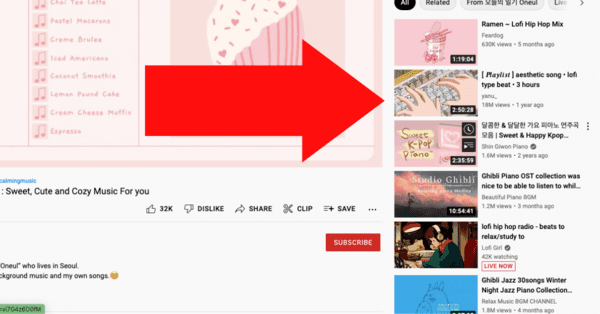
If you’ve been an active YouTube viewer in the past decade, then chances are you’ve heard of its advantageous algorithm. It’s likely that you’ve asked yourself; how does the Youtube algorithm work?” Well, in this case, the algorithm is set in place to make a creator’s videos noticeable to the general public. It can make videos popular, jumpstarting many online careers and businesses.
When promoting yourself or your brand on YouTube, you may also ask the question, “How can this site truly help people see my videos? ” After all, if you’re creating a public channel, you want it to grow. Here’s a quick guide to how the YouTube algorithm works.
Common Misconceptions About How The YouTube Algorithm Works

Image Credit: freestocks.org from Pexels
When most creators think of “The YouTube Algorithm” they envision a single system. But in reality, YouTube relies on multiple algorithms to create a real-time feedback loop. Basically, there are three different systems to pay attention to: one for the homepage, one for the search engine, and the other for suggested videos.
Although Youtube is known as a video service, it also functions as its own search engine. The search algorithm tailors itself for ranking the most relevant videos. This depends mostly on the specific keywords people search for.
But how does youtube search work? Whenever a website contains a search bar, a bit of SEO knowledge is required to stand out. But no worries—we’ve got an entire article describing the ins and outs of YouTube SEO.
[in_content_ads gallery=”logos” logo=”on” title=”Need graphic design help?” subtitle=”Try Penji’s Unlimited Graphic Design and get all your branding, digital, print, and UXUI designs done in one place.” btntext=”Learn More” btnlink=”https://penji.co”]
The Homepage Algorithm

Each time a viewer enters the YouTube website, it instantly greets them with an abundance of recommended videos. This is the case whether the user is on desktop or mobile. These diverse homepage suggestions consist of videos, each with its own colorful thumbnail, that YouTube believes the viewer will enjoy.
At first, this section contains a wide range of videos. This is because the algorithm doesn’t know what the viewer wants to watch yet. There are two factors that determine homepage videos: Performance and Personalization.
A video’s performance is analyzed through multiple things:
- Click-through rate
- Average view duration
- Average viewer percentage
- Likes and dislikes
- Viewer surveys
After using these metrics, YouTube determines which videos are trending more than others. It doesn’t matter whether a video gets negative or positive attention; in the algorithm’s eyes, engagement is engagement. This is why a video with an excessive portion of dislikes can appear at the top of someone’s homepage.
Through personalization, YouTube recommends videos based on a viewer’s past watch and search history. This caters the homepage’s content to each user’s interests. While you may have marketing strategies and money-making tips all over your homepage, your friends could have makeup tutorials or gaming content on theirs. This is why it is crucial to optimize your content so that the algorithm can correctly classify it.
The Suggested Videos Algorithm

We’ve all seen YouTube’s “suggested videos” list. These eye-catching thumbnails are easily viewable from the right of a desktop video, or at the bottom of a mobile video. The suggested video algorithm is likely to suggest videos that are often watched together. It also suggests videos that relate to the current video’s subject matter, have similar keywords, or are from the same creator.
Content creators can use YouTube Analytics to find out what other content their audience frequents. This gives you an idea of the broader topics that your viewers tend to be interested in.
In case you’re a bit confused, here’s how to view your analytics.
You can make even further use of the suggested videos algorithm by structuring your videos around what viewers will likely click on next. For example, videos separated into two parts are picked up by YouTube’s algorithm, bringing much more traction to your channel.
You can also consider posting sequels to already-popular videos. Even if you didn’t plan to make one at first, your audience is likely to click on a “part 2” of something they’ve previously enjoyed. It’s the same reason Hollywood studios are eager to make sequels to their hit movies. Even after many years, it generates an instant boost in brand exposure.
For anyone trying to conquer the YouTube algorithm, the best thing your channel can have is distinctive branding. This means having a consistent style for titles, thumbnails, and even video length. Use end screens and playlists to keep your audience engaged with your content.
There are so many options to choose from when it comes to branding your channel.
How Does The YouTube Algorithm Work With Viewer Satisfaction?

Image Credit: USA-Reiseblogger from Pexels
Along with its three main algorithms, YouTube makes an effort to detect the viewers’ overall satisfaction with their platform. They do this in many ways, from conducting short surveys in place of a video ad to monitoring the a video’s general watch time. They also track the number of likes and comments on each upload.
Engagement signals are yet another tool YouTube uses to rank videos on both the homepage and the suggested video menu.
If you are a marketer, entertainer, or any other type of content creator, you should take an objective look at each video you upload. With all the data you have on your core audience, would you, as a viewer, be compelled to click on your own video? Would you feel encouraged to watch it to the end? If your answer is “no,” then it is time to go back to the drawing board.
Conclusion
In short, how does the YouTube algorithm work? How does youtube search work?
YouTube’s core focus has always been guiding its audience to the highest quality videos that fit their interests. It does so by running multiple algorithms with the same end goal; recommending the right video. When you create a youtube channel for business, it is crucial to post engaging content while learning your way around SEO. By doing this, you’ll soon find yourself becoming a natural master of the YouTube algorithm.









